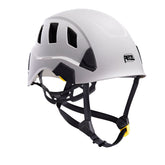Comparison of FFP2, KN95, and N95 and Other Filtering Facepiece Respirator Classes by 3M
3M Technical Bulletin
Filtering facepiece respirators (FFR), which are sometimes called disposable respirators, are subject to various regulatory standards around the world. These standards specify certain required physical properties and performance characteristics in order for respirators to claim compliance with the particular standard. During pandemic or emergency situations, health authorities often reference these standards when making respirator recommendations, stating, for example, that certain populations should use an "N95, FFP2, or equivalent" respirator.
This document is only intended to help clarify some key similarities between such references, specifically to the following FFR performance standards:
- N95 (United States NIOSH-42CFR84)
- FFP2 (Europe EN 149-2001)
- KN95 (China GB2626-2006)
- P2 (Australia/New Zealand AS/NZA 1716:2012)
- Korea 1st class (Korea KMOEL - 2017-64)
- DS (Japan JMHLW-Notification 214, 2018)
As shown in the following summary table, respirators certified as meeting these standards can be expected to function very similarly to one another, based on the performance requirements stated in the standards and confirmed during conformity testing.
One notable comparison point is the flow rates specified by these standards for the inhalation and exhalation resistance tests. Inhalation resistance testing flow rates range from 40 to 160L/min. Exhalation resistance testing flow rates range from 30 to 95 L/min. Some countries require testing to be performed at multiple flow rates, others at only the high or low end of those ranges. Although this appears to suggest that the standards’ requirements for breathing resistance (also called “pressure drop”) differ from each other, it’s important to understand that pressure drop across any filter will naturally be higher at higher flow rates and lower at lower flow rates. Given typical pressure curves for respirator filters, the standards’ various pressure drop requirements are actually quite similar. This chart shows a representative filter pressure drop curve. If one filter is tested at a high flow rate, the pressure drop performance will be relatively high. If that same filter is tested at a low flow rate, the pressure drop performance will be relatively low.

Based on this comparison, it is reasonable to consider China KN95, AS/NZ P2, Korea 1st Class, and Japan DS FFRs as
“equivalent” to US NIOSH N95 and European FFP2 respirators, for filtering non-oil-based particles such as those resulting
from wildfires, PM 2.5 air pollution, volcanic eruptions, or bioaerosols (e.g. viruses). However, prior to selecting a respirator,
users should consult their local respiratory protection regulations and requirements or check with their local public health
authorities for selection guidance.

Definitions
Filter performance - the filter is evaluated to measure the reduction in concentrations of specific aerosols in air that passes
through the filter.
Test agent - the aerosol that is generated during the filter performance test.
Total inward leakage (TIL) - the amount of a specific aerosol that enters the tested respirator facepiece via both filter
penetration and faceseal leakage, while a wearer performs a series of exercises in a test chamber.
Inward leakage (IL) - the amount of a specific aerosol that enters the tested respirator facepiece, while a wearer performs a
normal breathing for 3 minutes in a test chamber. The test aerosol size (count median diameter) is about 0.5 micro meter.
Pressure drop - the resistance air is subjected to as it moves through a medium, such as a respirator filter.
IMPORTANT: Always read and follow respirator user instructions.
